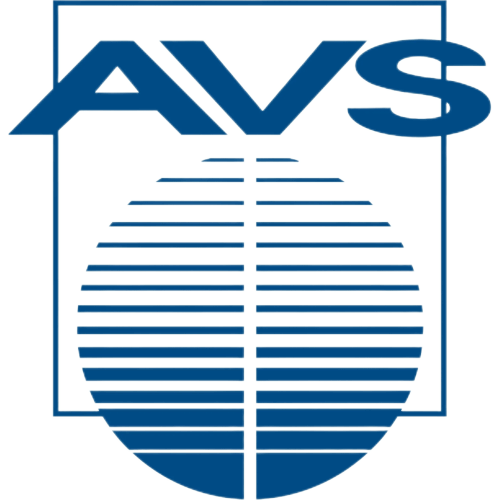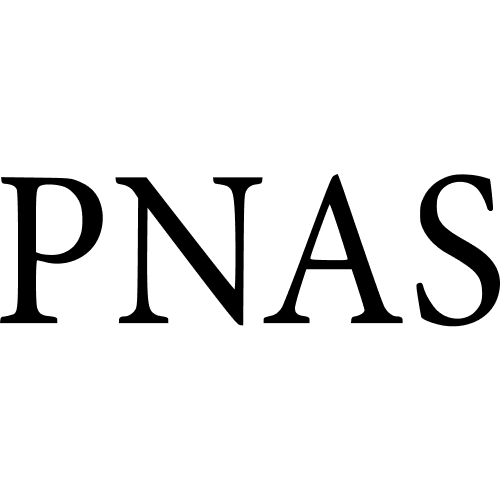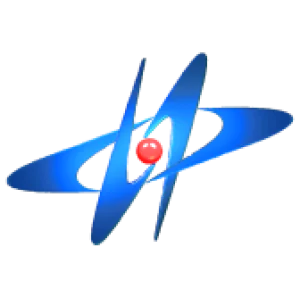Physical Chemistry Chemical Physics, volume 15, issue 23, pages 9125
Can mitochondrial dysfunction be initiated by dissociative electron attachment to xenobiotics?
Publication type: Journal Article
Publication date: 2013-04-08
Journal:
Physical Chemistry Chemical Physics
Quartile SCImago
Q1
Quartile WOS
Q2
Impact factor: 3.3
ISSN: 14639076, 14639084
Physical and Theoretical Chemistry
General Physics and Astronomy
Abstract
Resonance attachment of low-energy electrons to xenobiotic molecules, 2,4-dichlorophenoxyacetic acid (2,4-D), dichlorodiphenyltrichloroethane (DDT) and dichlorodiphenyldichloroethylene (DDE), was investigated under gas-phase conditions by means of complementary experimental techniques. Electron transmission spectroscopy (ETS) and dissociative electron attachment spectroscopy (DEAS), in the 0-6 eV and 0-15 eV energy range, respectively, were applied with the aim of modeling the behavior of these pesticide molecules under reductive conditions in vivo. Formation of long-lived parent molecular anions and fragment negative ions was observed at incident electron energies very close to zero, in agreement with the results of density functional theory calculations. The gas-phase DEA process, analogous to dissociative electron transfer in solution, was considered as a model for the initial step which occurs in the intermembrane space of mitochondria when a xenobiotic molecule captures an electron "leaked" from the respiratory chain. A possible involvement of the fragments produced by DEA to the pesticides under investigation into cellular processes is discussed. It is concluded that the free radicals and potential DNA adducts formed by DEA are expected to be dangerous for mitochondrial functionalities, while several of the products observed could act as messenger molecules, thus interfering with the normal cellular signaling pathways.
Citations by journals
|
1
2
3
4
|
|
|
Journal of Chemical Physics

|

Journal of Chemical Physics
4 publications, 12.9%
|
|
Physical Chemistry Chemical Physics

|

Physical Chemistry Chemical Physics
4 publications, 12.9%
|
|
Journal of Physical Chemistry Letters

|

Journal of Physical Chemistry Letters
3 publications, 9.68%
|
|
Journal of Physical Chemistry B

|

Journal of Physical Chemistry B
3 publications, 9.68%
|
|
Journal of Physical Chemistry A

|

Journal of Physical Chemistry A
2 publications, 6.45%
|
|
Methods in Molecular Biology

|

Methods in Molecular Biology
2 publications, 6.45%
|
|
Physical Review Research

|

Physical Review Research
1 publication, 3.23%
|
|
AVS Quantum Science

|

AVS Quantum Science
1 publication, 3.23%
|
|
Physics-Uspekhi

|

Physics-Uspekhi
1 publication, 3.23%
|
|
Current environmental health reports

|

Current environmental health reports
1 publication, 3.23%
|
|
Journal of Materials Science: Materials in Electronics

|

Journal of Materials Science: Materials in Electronics
1 publication, 3.23%
|
|
Journal of Molecular Modeling

|

Journal of Molecular Modeling
1 publication, 3.23%
|
|
Journal of Electron Spectroscopy and Related Phenomena

|

Journal of Electron Spectroscopy and Related Phenomena
1 publication, 3.23%
|
|
Science of the Total Environment

|

Science of the Total Environment
1 publication, 3.23%
|
|
Journal of Physics B: Atomic, Molecular and Optical Physics

|

Journal of Physics B: Atomic, Molecular and Optical Physics
1 publication, 3.23%
|
|
International Journal of Mass Spectrometry

|

International Journal of Mass Spectrometry
1 publication, 3.23%
|
|
Environmental Toxicology and Pharmacology

|

Environmental Toxicology and Pharmacology
1 publication, 3.23%
|
|
International Reviews in Physical Chemistry

|

International Reviews in Physical Chemistry
1 publication, 3.23%
|
|
Proceedings of the National Academy of Sciences of the United States of America

|

Proceedings of the National Academy of Sciences of the United States of America
1 publication, 3.23%
|
|
1
2
3
4
|
Citations by publishers
|
1
2
3
4
5
6
7
8
|
|
|
American Chemical Society (ACS)

|

American Chemical Society (ACS)
8 publications, 25.81%
|
|
Springer Nature

|

Springer Nature
5 publications, 16.13%
|
|
American Institute of Physics (AIP)

|

American Institute of Physics (AIP)
4 publications, 12.9%
|
|
Elsevier

|

Elsevier
4 publications, 12.9%
|
|
Royal Society of Chemistry (RSC)

|

Royal Society of Chemistry (RSC)
4 publications, 12.9%
|
|
American Physical Society (APS)

|

American Physical Society (APS)
1 publication, 3.23%
|
|
American Vacuum Society

|

American Vacuum Society
1 publication, 3.23%
|
|
Uspekhi Fizicheskikh Nauk Journal

|

Uspekhi Fizicheskikh Nauk Journal
1 publication, 3.23%
|
|
IOP Publishing

|

IOP Publishing
1 publication, 3.23%
|
|
Taylor & Francis

|

Taylor & Francis
1 publication, 3.23%
|
|
Proceedings of the National Academy of Sciences (PNAS)

|

Proceedings of the National Academy of Sciences (PNAS)
1 publication, 3.23%
|
|
1
2
3
4
5
6
7
8
|
- We do not take into account publications that without a DOI.
- Statistics recalculated only for publications connected to researchers, organizations and labs registered on the platform.
- Statistics recalculated weekly.
{"yearsCitations":{"type":"bar","data":{"show":true,"labels":[2013,2014,2015,2016,2017,2018,2019,2020,2021,2022],"ids":[0,0,0,0,0,0,0,0,0,0],"codes":[0,0,0,0,0,0,0,0,0,0],"imageUrls":["","","","","","","","","",""],"datasets":[{"label":"Citations number","data":[2,3,3,4,4,3,2,4,4,2],"backgroundColor":["#3B82F6","#3B82F6","#3B82F6","#3B82F6","#3B82F6","#3B82F6","#3B82F6","#3B82F6","#3B82F6","#3B82F6"],"percentage":["6.45","9.68","9.68","12.9","12.9","9.68","6.45","12.9","12.9","6.45"],"barThickness":null}]},"options":{"indexAxis":"x","maintainAspectRatio":true,"scales":{"y":{"ticks":{"precision":0,"autoSkip":false,"font":{"family":"Montserrat"},"color":"#000000"}},"x":{"ticks":{"stepSize":1,"precision":0,"font":{"family":"Montserrat"},"color":"#000000"}}},"plugins":{"legend":{"position":"top","labels":{"font":{"family":"Montserrat"},"color":"#000000"}},"title":{"display":true,"text":"Citations per year","font":{"size":24,"family":"Montserrat","weight":600},"color":"#000000"}}}},"journals":{"type":"bar","data":{"show":true,"labels":["Journal of Chemical Physics","Physical Chemistry Chemical Physics","Journal of Physical Chemistry Letters","Journal of Physical Chemistry B","Journal of Physical Chemistry A","Methods in Molecular Biology","Physical Review Research","AVS Quantum Science","Physics-Uspekhi","Current environmental health reports","Journal of Materials Science: Materials in Electronics","Journal of Molecular Modeling","Journal of Electron Spectroscopy and Related Phenomena","Science of the Total Environment","Journal of Physics B: Atomic, Molecular and Optical Physics","International Journal of Mass Spectrometry","Environmental Toxicology and Pharmacology","International Reviews in Physical Chemistry","Proceedings of the National Academy of Sciences of the United States of America"],"ids":[544,1773,21963,14990,15255,3516,26813,28411,10345,14046,20208,6610,21486,2679,9735,6811,19468,13972,306],"codes":[0,0,0,0,0,0,0,0,0,0,0,0,0,0,0,0,0,0,0],"imageUrls":["\/storage\/images\/resized\/ARM4e6URKRsbRZvIF0vFis9DjxGloBjnBYJXbHmZ_medium.webp","\/storage\/images\/resized\/leiAYcRDGTSl5B1eCnwpSGqmDEUEfDPPoYisFGhT_medium.webp","\/storage\/images\/resized\/iLiQsFqFaSEx6chlGQ5fbAwF6VYU3WWa08hkss0g_medium.webp","\/storage\/images\/resized\/iLiQsFqFaSEx6chlGQ5fbAwF6VYU3WWa08hkss0g_medium.webp","\/storage\/images\/resized\/iLiQsFqFaSEx6chlGQ5fbAwF6VYU3WWa08hkss0g_medium.webp","\/storage\/images\/resized\/voXLqlsvTwv5p3iMQ8Dhs95nqB4AXOG7Taj7G4ra_medium.webp","\/storage\/images\/resized\/nrK64iXHTzj43wMrfN1ZoUQ0vanswGzWPN45K3jA_medium.webp","\/storage\/images\/resized\/uCIAsivcf0PwzbBKNlcVk4osRd48viDZSveDRvyx_medium.webp","\/storage\/images\/resized\/FwiqB0ziXtO1uDSVpBYJ2sLrjRF4fgUy0rywXJa7_medium.webp","\/storage\/images\/resized\/voXLqlsvTwv5p3iMQ8Dhs95nqB4AXOG7Taj7G4ra_medium.webp","\/storage\/images\/resized\/voXLqlsvTwv5p3iMQ8Dhs95nqB4AXOG7Taj7G4ra_medium.webp","\/storage\/images\/resized\/voXLqlsvTwv5p3iMQ8Dhs95nqB4AXOG7Taj7G4ra_medium.webp","\/storage\/images\/resized\/GDnYOu1UpMMfMMRV6Aqle4H0YLLsraeD9IP9qScG_medium.webp","\/storage\/images\/resized\/GDnYOu1UpMMfMMRV6Aqle4H0YLLsraeD9IP9qScG_medium.webp","\/storage\/images\/resized\/LsKy6OnmmmRGcAU6CZgWQvNiP1polbaSLNrN7zqj_medium.webp","\/storage\/images\/resized\/GDnYOu1UpMMfMMRV6Aqle4H0YLLsraeD9IP9qScG_medium.webp","\/storage\/images\/resized\/GDnYOu1UpMMfMMRV6Aqle4H0YLLsraeD9IP9qScG_medium.webp","\/storage\/images\/resized\/5YZtvLvkPZuc2JHOaZsjCvGSHFCuC3drUwN3YAc5_medium.webp","\/storage\/images\/resized\/mxFdPe9qujsfvfYfcN0QOclAiYORFb0xrRlwV8gs_medium.webp"],"datasets":[{"label":"","data":[4,4,3,3,2,2,1,1,1,1,1,1,1,1,1,1,1,1,1],"backgroundColor":["#3B82F6","#3B82F6","#3B82F6","#3B82F6","#3B82F6","#3B82F6","#3B82F6","#3B82F6","#3B82F6","#3B82F6","#3B82F6","#3B82F6","#3B82F6","#3B82F6","#3B82F6","#3B82F6","#3B82F6","#3B82F6","#3B82F6"],"percentage":[12.9,12.9,9.68,9.68,6.45,6.45,3.23,3.23,3.23,3.23,3.23,3.23,3.23,3.23,3.23,3.23,3.23,3.23,3.23],"barThickness":13}]},"options":{"indexAxis":"y","maintainAspectRatio":false,"scales":{"y":{"ticks":{"precision":0,"autoSkip":false,"font":{"family":"Montserrat"},"color":"#000000"}},"x":{"ticks":{"stepSize":null,"precision":0,"font":{"family":"Montserrat"},"color":"#000000"}}},"plugins":{"legend":{"position":"top","labels":{"font":{"family":"Montserrat"},"color":"#000000"}},"title":{"display":true,"text":"Journals","font":{"size":24,"family":"Montserrat","weight":600},"color":"#000000"}}}},"publishers":{"type":"bar","data":{"show":true,"labels":["American Chemical Society (ACS)","Springer Nature","American Institute of Physics (AIP)","Elsevier","Royal Society of Chemistry (RSC)","American Physical Society (APS)","American Vacuum Society","Uspekhi Fizicheskikh Nauk Journal","IOP Publishing","Taylor & Francis","Proceedings of the National Academy of Sciences (PNAS)"],"ids":[40,8,250,17,123,1539,4511,6903,2075,18,162],"codes":[0,0,0,0,0,0,0,0,0,0,0],"imageUrls":["\/storage\/images\/resized\/iLiQsFqFaSEx6chlGQ5fbAwF6VYU3WWa08hkss0g_medium.webp","\/storage\/images\/resized\/voXLqlsvTwv5p3iMQ8Dhs95nqB4AXOG7Taj7G4ra_medium.webp","\/storage\/images\/resized\/ARM4e6URKRsbRZvIF0vFis9DjxGloBjnBYJXbHmZ_medium.webp","\/storage\/images\/resized\/GDnYOu1UpMMfMMRV6Aqle4H0YLLsraeD9IP9qScG_medium.webp","\/storage\/images\/resized\/leiAYcRDGTSl5B1eCnwpSGqmDEUEfDPPoYisFGhT_medium.webp","\/storage\/images\/resized\/nrK64iXHTzj43wMrfN1ZoUQ0vanswGzWPN45K3jA_medium.webp","\/storage\/images\/resized\/uCIAsivcf0PwzbBKNlcVk4osRd48viDZSveDRvyx_medium.webp","\/storage\/images\/resized\/FwiqB0ziXtO1uDSVpBYJ2sLrjRF4fgUy0rywXJa7_medium.webp","\/storage\/images\/resized\/LsKy6OnmmmRGcAU6CZgWQvNiP1polbaSLNrN7zqj_medium.webp","\/storage\/images\/resized\/5YZtvLvkPZuc2JHOaZsjCvGSHFCuC3drUwN3YAc5_medium.webp","\/storage\/images\/resized\/mxFdPe9qujsfvfYfcN0QOclAiYORFb0xrRlwV8gs_medium.webp"],"datasets":[{"label":"","data":[8,5,4,4,4,1,1,1,1,1,1],"backgroundColor":["#3B82F6","#3B82F6","#3B82F6","#3B82F6","#3B82F6","#3B82F6","#3B82F6","#3B82F6","#3B82F6","#3B82F6","#3B82F6"],"percentage":[25.81,16.13,12.9,12.9,12.9,3.23,3.23,3.23,3.23,3.23,3.23],"barThickness":13}]},"options":{"indexAxis":"y","maintainAspectRatio":false,"scales":{"y":{"ticks":{"precision":0,"autoSkip":false,"font":{"family":"Montserrat"},"color":"#000000"}},"x":{"ticks":{"stepSize":null,"precision":0,"font":{"family":"Montserrat"},"color":"#000000"}}},"plugins":{"legend":{"position":"top","labels":{"font":{"family":"Montserrat"},"color":"#000000"}},"title":{"display":true,"text":"Publishers","font":{"size":24,"family":"Montserrat","weight":600},"color":"#000000"}}}}}
Metrics
Cite this
GOST |
RIS |
BibTex |
MLA
Cite this
GOST
Copy
Pshenichnyuk S. A., Modelli A. Can mitochondrial dysfunction be initiated by dissociative electron attachment to xenobiotics? // Physical Chemistry Chemical Physics. 2013. Vol. 15. No. 23. p. 9125.
GOST all authors (up to 50)
Copy
Pshenichnyuk S. A., Modelli A. Can mitochondrial dysfunction be initiated by dissociative electron attachment to xenobiotics? // Physical Chemistry Chemical Physics. 2013. Vol. 15. No. 23. p. 9125.
Cite this
RIS
Copy
TY - JOUR
DO - 10.1039/c3cp50614b
UR - https://doi.org/10.1039%2Fc3cp50614b
TI - Can mitochondrial dysfunction be initiated by dissociative electron attachment to xenobiotics?
T2 - Physical Chemistry Chemical Physics
AU - Pshenichnyuk, Stanislav A.
AU - Modelli, A.
PY - 2013
DA - 2013/04/08 00:00:00
PB - Royal Society of Chemistry (RSC)
SP - 9125
IS - 23
VL - 15
SN - 1463-9076
SN - 1463-9084
ER -
Cite this
BibTex
Copy
@article{2013_Pshenichnyuk,
author = {Stanislav A. Pshenichnyuk and A. Modelli},
title = {Can mitochondrial dysfunction be initiated by dissociative electron attachment to xenobiotics?},
journal = {Physical Chemistry Chemical Physics},
year = {2013},
volume = {15},
publisher = {Royal Society of Chemistry (RSC)},
month = {apr},
url = {https://doi.org/10.1039%2Fc3cp50614b},
number = {23},
pages = {9125},
doi = {10.1039/c3cp50614b}
}
Cite this
MLA
Copy
Pshenichnyuk, Stanislav A., et al. “Can mitochondrial dysfunction be initiated by dissociative electron attachment to xenobiotics?.” Physical Chemistry Chemical Physics, vol. 15, no. 23, Apr. 2013, p. 9125. https://doi.org/10.1039%2Fc3cp50614b.
Profiles


